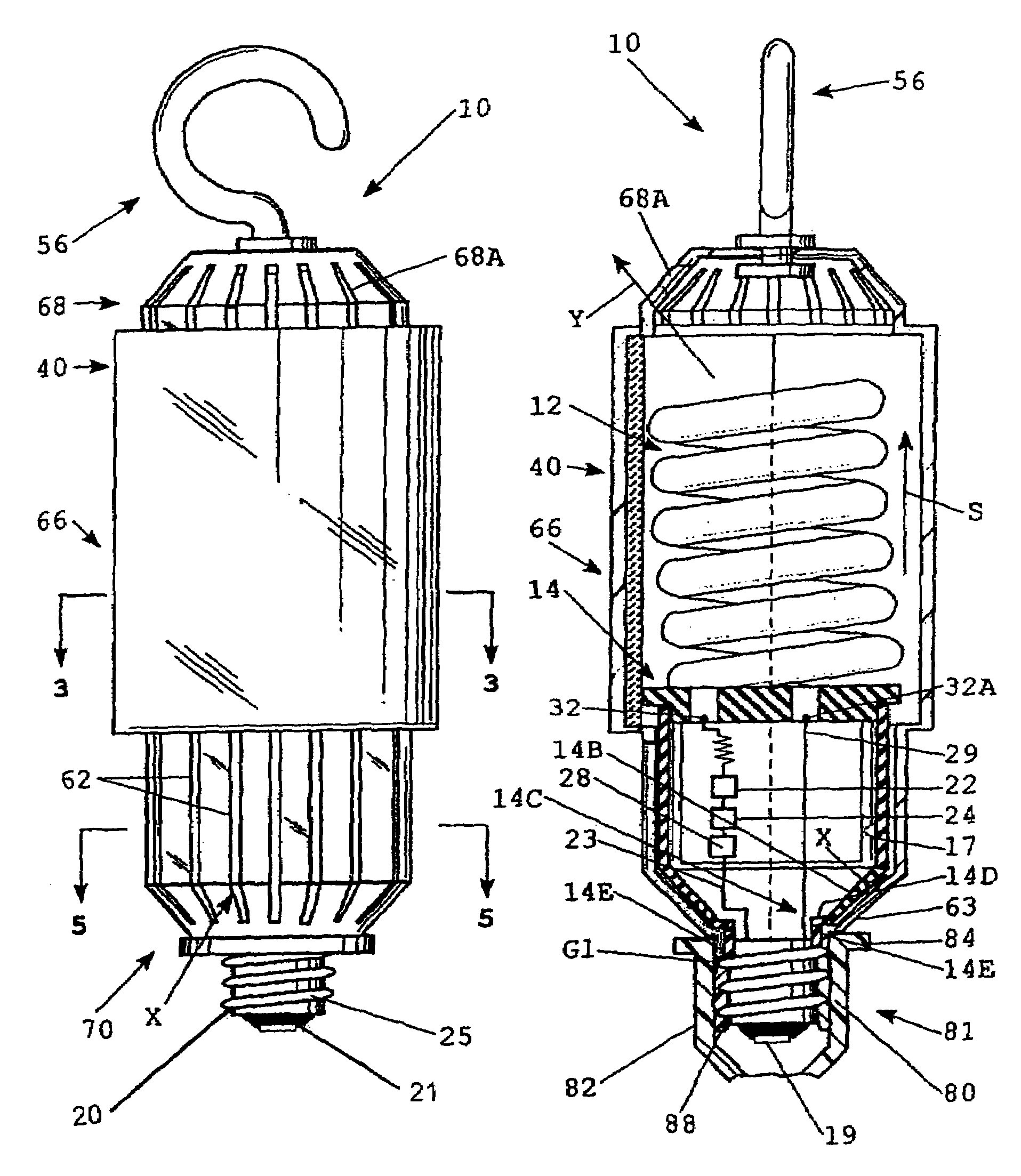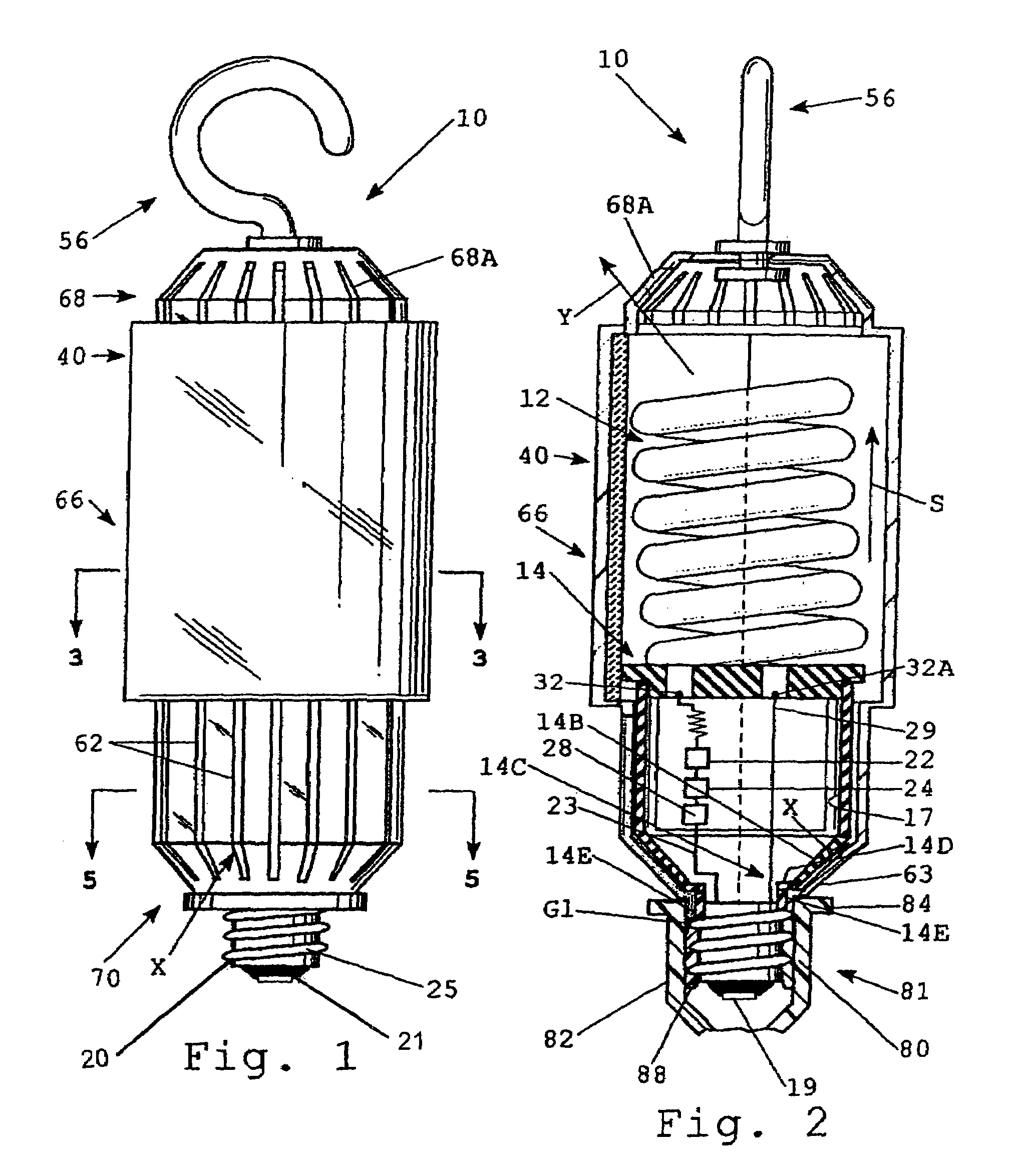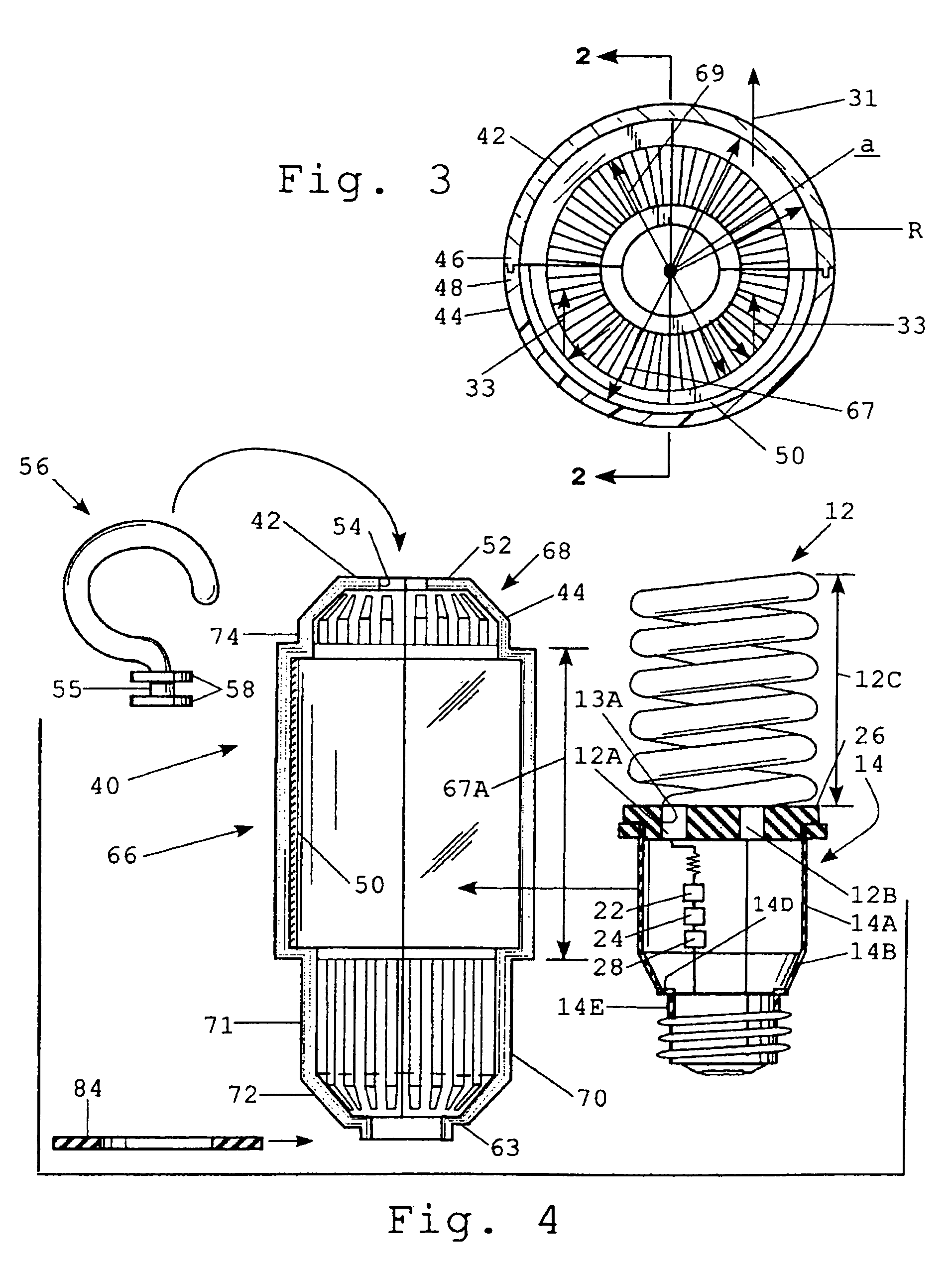Disposable work light
a work light and light plate technology, applied in the field of portable work lights, can solve the problems of inconvenient use, inconvenient maintenance, and easy breakage of incandescent lamp filaments, and achieve the effects of reducing diameter, limiting light output, and limiting relative movemen
- Summary
- Abstract
- Description
- Claims
- Application Information
AI Technical Summary
Benefits of technology
Problems solved by technology
Method used
Image
Examples
Embodiment Construction
[0025]A disposable work light, generally designated 10, constructed according to the present invention includes a fluorescent lamp or light source, generally designated 12, including an electrically non-conductive, open top hollow one piece base, generally designated 14, which may comprise any electrically non-conductive material, such as plastic. The open top is closed via an electrically non-conductive cap 26 which is press fit into the open top and has a pair of bulb receiving apertures 13A therethrough. The fluorescent light bulb 12 includes a pair of upstanding glass legs 12A and 12B received in the apertures 13A, coupled to a spiral glass configuration 12C having a relatively short axial length 12D. The base 14 has a cavity 17 which receives a ballast or transformer 22, a starter 24 and other assundry electronic circuitry 28 electrically coupled, via line 23, between one terminal 32 of the fluorescent bulb 12 and a central terminal 19 insulated from an electrically conductive ...
PUM
 Login to View More
Login to View More Abstract
Description
Claims
Application Information
 Login to View More
Login to View More - R&D
- Intellectual Property
- Life Sciences
- Materials
- Tech Scout
- Unparalleled Data Quality
- Higher Quality Content
- 60% Fewer Hallucinations
Browse by: Latest US Patents, China's latest patents, Technical Efficacy Thesaurus, Application Domain, Technology Topic, Popular Technical Reports.
© 2025 PatSnap. All rights reserved.Legal|Privacy policy|Modern Slavery Act Transparency Statement|Sitemap|About US| Contact US: help@patsnap.com



